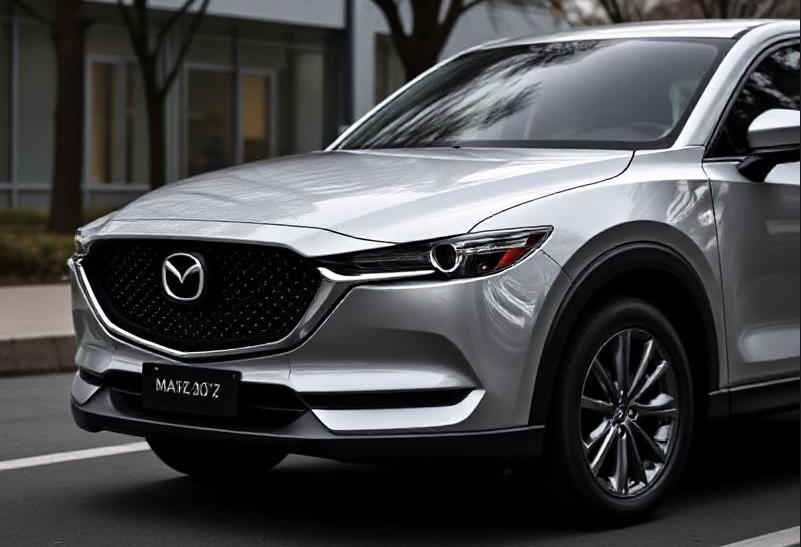The Evolution of the Mazda CX-5: A Comprehensive Overview
The Mazda CX-5 has captured the hearts of drivers around the world since its debut in 2012. Known for its striking design, engaging driving dynamics, and practicality, the CX-5 has undergone significant evolution over the years. This article explores the various models and trim levels offered during the production run of the Mazda CX-5, highlighting key developments and changes between different generations.
First Generation (2012-2016)
Introduction and Debut (2012)
The Mazda CX-5 made its global debut at the 2011 Frankfurt Motor Show, with production starting in early 2012. The first-generation CX-5 was a pioneer for Mazda’s KODO design philosophy, promoting a “Soul of Motion” aesthetic that emphasized sleek lines and an athletic stance. It was the first Mazda vehicle to showcase the Skyactiv Technology, which aimed to enhance fuel efficiency and performance.
Key Features:
- Engine Options: The CX-5 was initially offered with a 2.0-liter Skyactiv-G gasoline engine, producing 155 horsepower, or a 2.2-liter Skyactiv-D turbocharged diesel engine (available in certain markets).
- Transmission: Buyers could choose between a 6-speed manual or a 6-speed automatic transmission.
- Drivetrain: Both front-wheel drive (FWD) and all-wheel drive (AWD) options were available.
Trim Levels:
In its inaugural year, the CX-5 was offered in multiple trims:
- Sport: The base model included features like Bluetooth connectivity, a USB audio input, and a 5.8-inch touchscreen.
- Touring: Added amenities such as a rearview camera, upgraded infotainment system, and leatherette upholstery.
- Grand Touring: Included premium features like a power liftgate, navigation, and a premium Bose sound system.
Production Years: 2012-2016
Throughout its production, the CX-5 received various updates, including improved interior materials, additional safety features, and tech upgrades.
Mid-Cycle Refresh (2016)
In 2016, Mazda launched a mid-cycle refresh of the CX-5, addressing feedback from consumers and critics alike. Key enhancements to the design included a more refined exterior that featured a more aggressive grille and sharper lines. Inside, the cabin was upgraded with higher-quality materials and an intuitive infotainment system.
Trim Levels Post-Refresh:
- Sport: Maintained the core features of connectivity and safety that defined its predecessor.
- Touring: This trim offered additional options, including larger wheels and advanced active safety technologies.
- Grand Touring: The top trim introduced features like a windshield-projected heads-up display and Nappa leather seating.
.

.
Second Generation (2017-Present)
Launch and Innovations (2017)
The second-generation CX-5 was unveiled at the 2016 Los Angeles Auto Show and began reaching dealerships in early 2017. This new iteration showcased a significant leap in interior quality, technology, and overall refinement.
Design Philosophy:
This generation emphasized a bolder KODO design language, featuring a larger and more pronounced grille, sleeker headlights, and a more sculpted body. The cabin quality was significantly improved, with an upscale feel and advanced technology integration.
Engine and Performance:
The second generation continued with the Skyactiv engine family, focusing on efficiency without compromising driving enjoyment. However, the 2.5-liter four-cylinder engine became the standard offering in the U.S. market, producing 187 horsepower.
New Trim Levels:
The 2017 CX-5 was offered in several trims:
- Sport: Base features included a 7-inch touchscreen, rearview camera, and advanced safety systems.
- Touring: Added comfort and convenience features such as a power-adjustable driver’s seat, dual-zone climate control, and additional USB ports.
- Grand Touring: Enhanced with leather seating, a premium audio system, and advanced safety technology.
- Grand Touring Reserve: Introduced a turbocharged 2.5-liter engine, all-wheel drive, and more luxury-oriented features.
- Signature: The flagship trim came with premium materials, wood accents, a 360-degree camera system, and other high-end offerings.
Notable Updates (2018-2021)
The CX-5 saw incremental updates during this period, including:
- 2019 Refresh: Introduction of a new turbocharged engine option for higher trims, an updated infotainment system, and enhanced safety features.
- 2020 Model Year: Improved materials and technology, including Apple CarPlay and Android Auto compatibility across more trims, ensuring that the CX-5 remained competitive in a growing market.
- 2021 Updates: The 2021 CX-5 continued to thrive with additional driver-assistance technologies and a refined design that kept the vehicle modern and appealing.
Current Generation and Future Outlook (2022-Present)
As of 2022, the Mazda CX-5 remains a strong contender in the compact SUV segment, regularly praised for its engaging driving dynamics and premium interior. The introduction of hybrid and electrified options is anticipated in the future, aligning with industry trends toward sustainability.
Trim Levels in Current Production:
- Base (previously Sport): Features essential technologies and comfort.
- Select: Adds more convenience and comfort features.
- Preferred: Introduces higher-end materials and finishes.
- Premium: Expands upon luxury elements and advanced safety tech.
- Turbo: Focuses on performance with the turbocharged engine option.
- Signature: The ultimate trim combining luxury features, technology, and performance enhancements.
Conclusion
The evolution of the Mazda CX-5 highlights a successful journey from its inception in 2012 to its current status. Through careful design, technological enhancements, and a focus on driving dynamics, the CX-5 has solidified its position in the competitive compact SUV market. With a thoughtful array of trim levels and continuous adaptation to consumer needs, Mazda’s flagship SUV is poised for ongoing success in the automotive landscape. As Mazda looks toward future developments, including electrification and more innovative features, the CX-5 is set to remain a favorite among those seeking both style and performance in a practical package.







